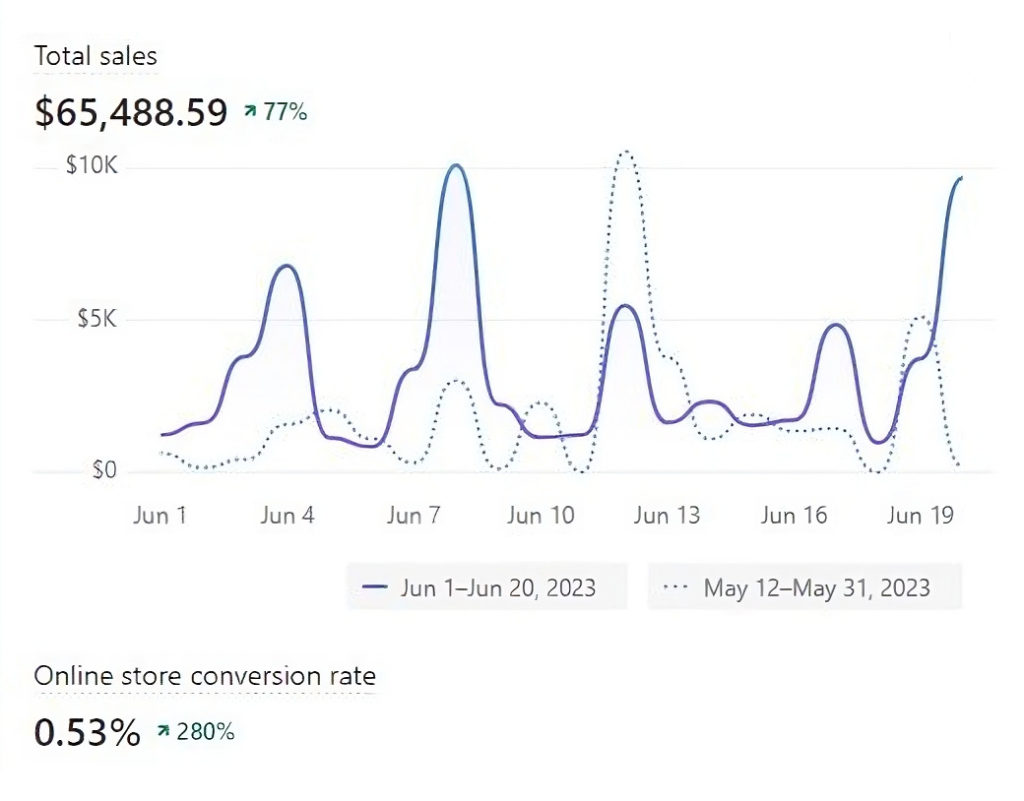By removing mandatory account creation during the checkout process, KNB Online Inc. helped an ecommerce site from the furniture industry increase their sales by 77% and their conversion rate by 280%.
Here’s exactly how they did it.
Do you also have a fast marketing tactic that’s delivered great results? Share it with us here.
Table of contents
The goal: Increase sales and conversion rate
KNB Online Inc., an agency working with an ecommerce site from the furniture industry, identified a critical barrier in the conversion funnel of a client’s site: every customer was required to create an account before making a purchase.
To simplify the purchasing process, eliminate barriers, and increase sales and conversion rate, they had to eliminate the requirement to create an account during the checkout process.
The Fast Marketing tactic: Removing mandatory account creation
Since having to create an account before making a purchase could be a potential hindrance to sales, KNB worked together with the client’s technical team to modify the checkout process.
They reconfigured the e-commerce platform settings and tested the new flow to ensure customers could make purchases without the mandatory account creation.
The result: 77% more revenue
The team removed the mandatory account creation requirement on June 1, 2023. By June 20, sales had shot up 77% when compared to the previous period.
Additionally, the conversion rate skyrocketed by an impressive 280% during the same time frame.

Why does it work?
- One in four customers abandons online purchases due to forced registration. Removing mandatory account creation eliminates a barrier in the purchase flow, making it more streamlined and user-friendly.
- Forced registration is part of the “greedy marketer syndrome.” Ecommerce marketers want to do it because they hope the user gets “locked in” and will shop more because they have an account. That’s not true, and removing forced registration makes the customer journey smoother, leading to a better user experience.
- A frictionless path to purchase encourages more users to complete transactions, leading to a higher conversion rate.
How to implement this tactic yourself
- Adjust your ecommerce platform to offer a guest checkout. Most platforms offer guest checkout functionalities, including Shopify and WooComerce, but you might have to work with your technical team to enable this.
- Don’t even mention the word “Register” during checkout. Say “New Customer” or a similar term to avoid anything that sounds like a forced registration.
- Work on registration only after the sale. After checkout, offer account creation on the “Thank You” page. Ensure they can use the data they have already provided during checkout, like name, email, and address, so the whole process doesn’t take more than a few clicks.
- After implementing this tactic, continue optimizing your checkout flow. This includes making the “Add to Cart” function clear, making it easy for visitors to remove items, or asking for the easiest information first on the checkout page.
Meet the specialist behind this tactic
Kevin Brkal is a seasoned paid ads expert with over 20 years of experience in digital marketing. He specializes in optimizing campaigns for maximum ROI.
Connect with Kevin on LinkedIn for more marketing insights and ideas.




